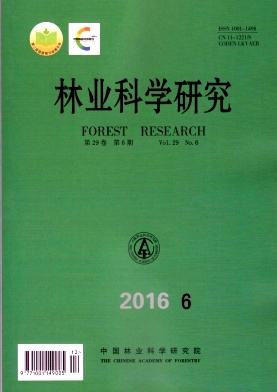|
[1]
|
易同培, 史军义, 马丽莎, 等.中国竹类图志[M]. 北京:科学出版社,2008.
|
|
[2]
|
易同培, 马丽莎, 史军义, 等.中国竹亚科属种检索表[M].北京:科学出版社, 2009.
|
|
[3]
|
叶致云.德清县早园竹培育管理技术[J]. 浙江林业科技, 1985,(1):18-19.
|
|
[4]
|
丁兴萃.覆盖栽培早竹开花的激素机制研究[J]. 林业科学, 2007,43(7):10-15.
|
|
[5]
|
耿显胜, 舒金平, 王浩杰.早园竹林2种造瘿小蜂及其形成的虫瘿的研究[J]. 林业科学研究, 2014,27(6):764-768.
|
|
[6]
|
莫建初, 王问学, 宋运堂, 等. 竹小蜂幼虫空间分布型及其抽样技术研究[J]. 中南林学院学报, 1992,12(2):116-123.
|
|
[7]
|
陈顺立, 吴晖, 陈更新. 竹小蜂幼虫空间分布型及抽样技术研究[J]. 华东昆虫学报, 1997,6(1):50-54.
|
|
[8]
|
Shibata E. Oviposition site preference of the bamboo gall maker, Aiolomorphus rhopaloides (Hymenoptera: Eurytomidae), on bamboo in terms of plant-vigor hypothesis[J]. Applied Entomology and Zoology, 2005, 40(4): 631-636. |
|
[9]
|
Shibata E. Spatial density-independent parasitism of the inquiline, Diomorus aiolomorphi (Hymenoptera: Torymidae), on the bamboo gall maker, Aiolomorphusr hopaloides (Hymenoptera: Eurytomidae)[J]. Applied Entomology and Zoology, 2006, 41(3): 493-498. |
|
[10]
|
徐汝梅, 李兆华, 李祖萌, 等. 温室白粉虱成虫空间分布型的研究[J]. 昆虫学报, 1980,23(3): 265-275.
|
|
[11]
|
丁岩钦. 昆虫数学生态学[M]. 北京:科学出版社, 1994.
|
|
[12]
|
Stone G M, Schönrogge K, Atkinson R J, et al. The population biology of oak gall wasps (Hymenoptera: Cynipidae)[J]. Annual Review of Entomology, 2002, 47(1):633-668. |
|
[13]
|
Fernandes G W, Coelho M S, Santos J C. Population ecology of galling arthropods in the Neotropics[M] // Fernandes G W, Santos J C. Neotropical insect galls. Dordrecht: Springer Science and Business Media, 2014:69-98. |
|
[14]
|
Price P W. The plant vigor hypothesis and herbivore attack[J]. Oikos, 1991, 62(2): 244-251. |
|
[15]
|
Cornelissen T, Fernandes W G, Vasconcellos-Neto J. Size does matter: variation in herbivory between and within plants and the plant vigor hypothesis[J]. Oikos, 2008, 117(8): 1121-1130. |
|
[16]
|
Ozaki K, Yukawa J, Ohgushi T, et al. Galling arthropods and their associates[M]. Tokyo: Springer Verlag,2006. |
|
[17]
|
Araújo A P A, De Paula J D A, Carneiro M A A, et al. Effects of host plant architecture on colonization by galling insects[J]. Austral Ecology, 2006, 31(3): 343-348 |
|
[18]
|
Espírito-Santo M M, Neves F S, Andrade-Neto F R, et al. Plant architecture and meristem dynamics as the mechanisms determining the diversity of gall-inducing insects[J]. Oecologia, 2007, 153(2): 353-364. |
|
[19]
|
Lara D P, Oliveira L A, Azevedo I F P, et al. Relationships between host plant architecture and gall abundance and survival[J]. RevistaBrasileira de Entomologia, 2008, 52(1): 78-81. |





 DownLoad:
DownLoad: